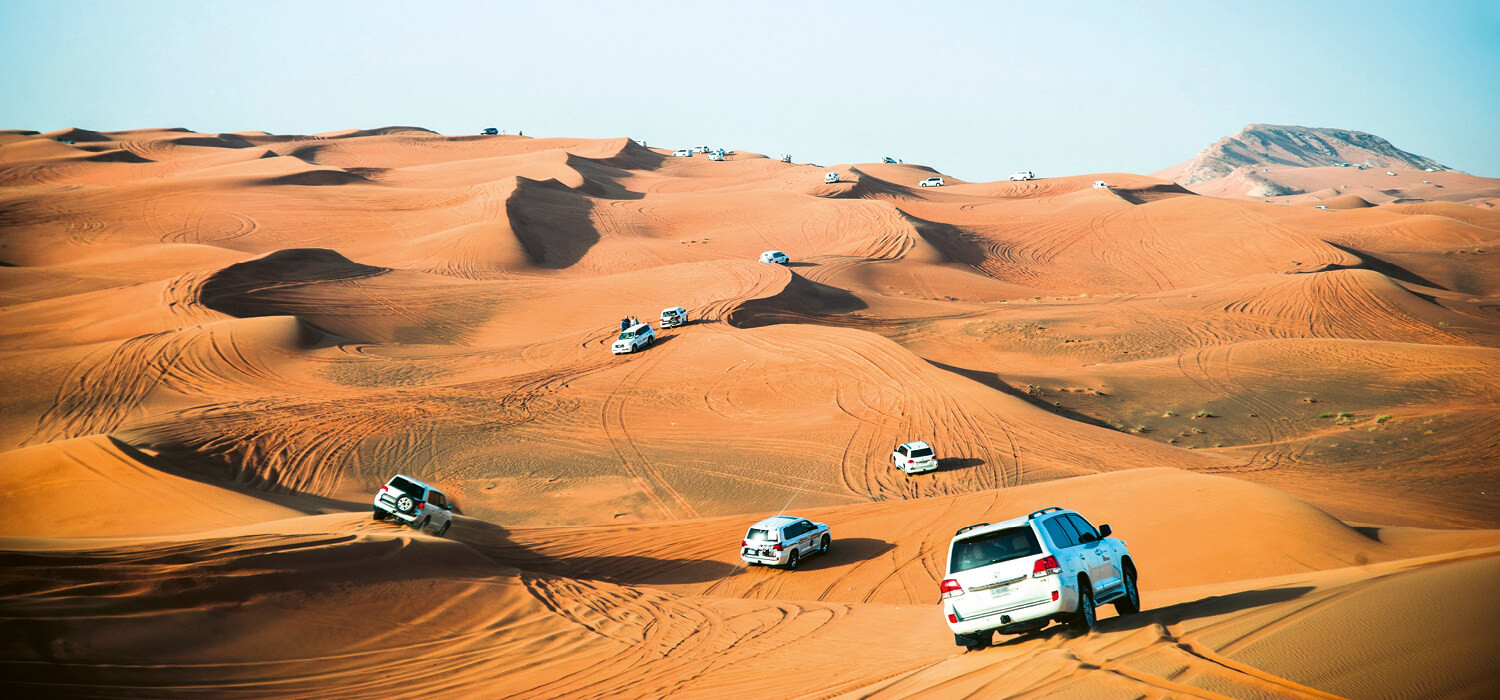
Off-road driving is fun, but safety should be your top priority. Always be sensible and patient, and practise your off-road skills whenever you can. The following safety guidelines will help you get out of a mishap with as little drama as possible.
Driving In Convoy
The first rule of driving in convoy is that each driver is responsible for the car behind. This ensures that the convoy travels at the speed of the slowest car, and everyone returns to civilisation together. The second rule is to leave sufficient space between you and the car ahead. This depends on the speed you are travelling and the terrain, but should be a minimum of 20 to 40m. Not only does this prevent pile-ups if the lead car stops suddenly, but it also stops you from getting bombarded by clouds of dust and flying stones.
Don’t worry if you can’t always see the car ahead, especially in confined areas where it’s impossible to tailgate a car to the top of a dune. However, it can be useful to watch how the driver in front of you handles tricky situations, such as ridges and dunes, before you follow them. Don’t attempt to negotiate tricky parts of your route before the car ahead of you has cleared it – if they fail and you are in hot pursuit, both vehicles can come to an abrupt stop and get stuck. If your lead car does get stuck, use the horn to warn oncoming cars before they come flying over the dune. If you are last in the convoy and you get stuck, turn your headlights on so that those ahead of you can see you’re in trouble.
REMEMBER
- Take your mobile phone – even if network services are poor in some remote areas. In an emergency someone can try to reach a high point to get a signal. Make sure your phone is fully charged, and take an in-car charger – don’t let it be the battery that lets you down
- Travel with a buddy – if you are going more than a kilometre or two off the beaten track, and always for desert driving. Ideally, go with an experienced off-road driver; that second vehicle or extra pair of hands could literally be a lifesaver. You are never too experienced to take a second vehicle
- Pack a first aid kit – fortunately, Saudi Arabia has very few nasty plants and animals, but for the few they do, you need to be prepared (see the 'First Aid' section). Know the medical histories of your passengers – if they are on medication, make sure that they bring it and if they have any chronic conditions, ensure they’re fit to go before you leave
- Always take plenty of water; at least 3 litres of drinking water per person per day
- Always wear your seatbelt and ensure that all your passengers, in both the front and back seats, do the same. For children under 11, the appropriate level of booster seat is also required by law


















